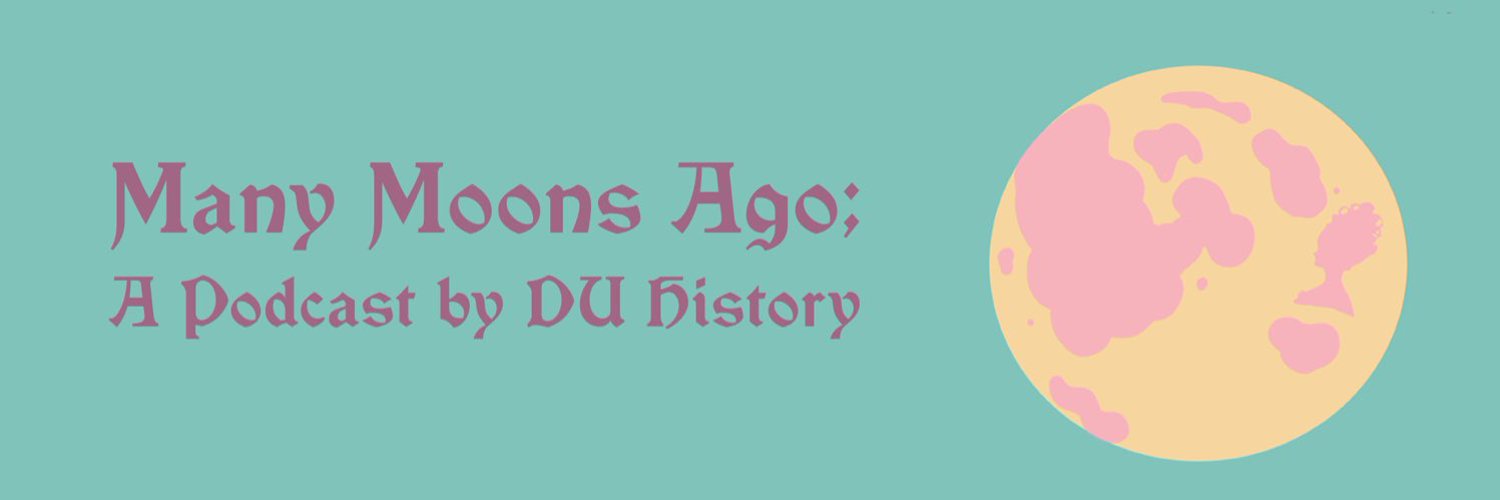The relationship between art and history is an extensive area of academic thought. The ways in which art has influenced the course of history are often overlooked for factors considered more important, such as politics or economics. However, the DU History Society (DU History) demonstrates the importance of using art as a historical source. Through understanding the historical context in which art has been produced, we can approach the work itself with a whole new perspective.
As a result of stricter social distancing measures put into place during Freshers week, DU History was one step ahead. It has appeared to combat these challenges by releasing a new podcast entitled Many Moons Ago. With bright, colourful artwork and a catchy jingle written by Tadhg Williams, a third year History student, DU History has certainly shown that this is no amateur podcast. Stated within its podcast description, the society says that they “will explore a myriad of themes, periods, and topics throughout history through interviews and discussions with scholars to explore student led discourse”.
Episode 1, The Relationship Between History and Art, did not disappoint. Packed with information, the society acquired three esteemed scholars to discuss their respective specialised topics. Yet, at approximately 45 minutes long, the podcast did not feel long-winded.
Dr Aoife Brady, Curator for Spanish and Italian Art in the National Gallery of Ireland started the episode by discussing Spanish art in the wake of the Reformation and the impact this had on art in the late 16th and 17th centuries. She began by giving a very comprehensive overview of the counter-Reformation movement, which was led by the Catholic Church in response to the growing Protestant movement across Europe earlier in the 16th century. It appears that efforts to challenge Protestant reform extend beyond religious practice into artwork. Brady affirms that during this time, religious painting was utilised by the Catholic Church as a didactic tool against Protestantism. Her skilled analysis of The Kitchen Maid, the painting by Diego Velázquez around 1619, provides just one example of how art at this time reflected the concerns of the church.
The still life painting portrays an African servant woman working in a kitchen, distracted by a haloed Christ. Brady states that the naturalism of the painting is a common characteristic associated with counter-Reformation art. She says that “by depicting objects as they might have appeared in real life, this allows the view to easily understand and engage with the religious theme of work, thereby strengthening its message”. The enlightening explanations by Brady serve a more insightful understanding to the Spanish Collection in the National Gallery of Ireland.
Next, Billy Shortall, an Irish Art History PhD student at Trinity, spoke about his speciality: Irish art in the 20th century. As an area of modern history that most Irish students will be familiar with, Shortall’s discussion of international exhibitions of Irish art as political tools to strengthen the newly established state provided a new perspective on this period. He declares that “the state harnessed art both nationally and internationally for political purposes”. Focusing on the years between 1922 to 1934, Shortall explains how an exhibition of Irish art in Paris was an instrumental propaganda tool. Held only two weeks after the Dail passed the Anglo-Irish on 7th January 1922, this cultural event was held during political uncertainty. As a major European city and one of the art capitals of the world, Shortall explains that Paris assisted Ireland in “a bold statement of political and artistic independence”.
At this point in time, the Irish state was still not officially recognised by other countries. Moreover, Shortall explains how artists involved in the exhibition counteract the negative portrayal of Irish people that had been displayed in English cartoons prior to the event. Irish people were often artistically portrayed as racially inferior and unable to self govern. With the historical context provided by Shortall, it is interesting to understand that displayed revolutionary figures such as Michael Collins as statesmen and capable of self governance had a much deeper importance than one might initially think. Events like this which allowed the Irish people to display their own culture are clearly a core part of the country’s history.
Finally, Erik Gaffney, the Acquisitions editor in scholarly publishing and the founder of ArtHerstory concluded the podcast with a discussion of overlooked female old masters. Gaffney states that, throughout the history of art, there is a widespread lack of critical acclaim for female artists. Until recently, women artists could only look back a few generations for role models. However, she remains positive as new art and material by renaissance women is appearing. Gaffney pays tribute to these women overlooked in history by telling us about ten renaissance and baroque female artists who represent a small percentage of women who were famous for their art in these times. Lavinia Fontana, 1552 -1614, is among these women and is particularly interesting.
Gaffney suggests that Fontana may have been the first professional female artist: the first woman artist to paint females nude and to use live nude female models. She was the breadwinner for herself, her husband, and their eleven children. She was invited to elect into the academy of Saint Lucan Rome, where she moved at the invitation of Pope Clement VIII. Gaffney showed that the relationship between art and history is more complicated than one might think. Female artists who worked alongside the likes of Michaelangelo were old masters and should be given more credit. Gaffney’s perspective talk reminds us that we should take more time to critically analyse and truly understand our past.
The DU History Society should certainly be proud of their new podcast. With an insightful and captivating selection of speakers on a variety of topics, there is something for everyone to listen to. Indeed, many more enjoyable afternoons can be spent listening to Many Moons Ago as they continue to publish more podcasts.






